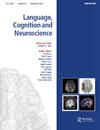Different encoding of legal and illegal speech sequences: beyond phonetic planning?
IF 1.8
3区 医学
Q2 AUDIOLOGY & SPEECH-LANGUAGE PATHOLOGY
引用次数: 0
Abstract
ABSTRACT Transforming linguistic codes into articulated speech is thought to rely on different phonetic (motor speech) encoding/planning processes for practiced sequences and for unpracticed/uncommon speech sequences. However, transforming phonological codes into articulation likely involves processes beyond phonetic planning, going on even during articulation. Here we sought behavioural, acoustic and brain dynamics differences in the preparation of matched common/legal and uncommon/illegal speech sequences in 20 participants. Illegal syllables were initialised faster – contrary to what is generally expected -, had longer acoustic duration and differed from legal syllables in ERP waveform amplitudes and microstates in a time-window preceding and following the vocal onset. The pattern of results suggests that speech plans are of different size for legal and illegal syllables, and impact on the parametrisation of the corresponding motor programmes, allowing fast execution of the segmentalised illegal sequences for which incremental speech programming continues during articulation.合法和非法语音序列的不同编码:超越语音规划?
本文章由计算机程序翻译,如有差异,请以英文原文为准。
求助全文
约1分钟内获得全文
求助全文
来源期刊

Language Cognition and Neuroscience
AUDIOLOGY & SPEECH-LANGUAGE PATHOLOGY-BEHAVIORAL SCIENCES
CiteScore
4.50
自引率
13.00%
发文量
70
期刊介绍:
Language, Cognition and Neuroscience (formerly titled Language and Cognitive Processes) publishes high-quality papers taking an interdisciplinary approach to the study of brain and language, and promotes studies that integrate cognitive theoretical accounts of language and its neural bases. We publish both high quality, theoretically-motivated cognitive behavioural studies of language function, and papers which integrate cognitive theoretical accounts of language with its neurobiological foundations.
The study of language function from a cognitive neuroscience perspective has attracted intensive research interest over the last 20 years, and the development of neuroscience methodologies has significantly broadened the empirical scope of all language research. Both hemodynamic imaging and electrophysiological approaches provide new perspectives on the representation and processing of language, and place important constraints on the development of theoretical accounts of language function and its neurobiological context.
 求助内容:
求助内容: 应助结果提醒方式:
应助结果提醒方式:


